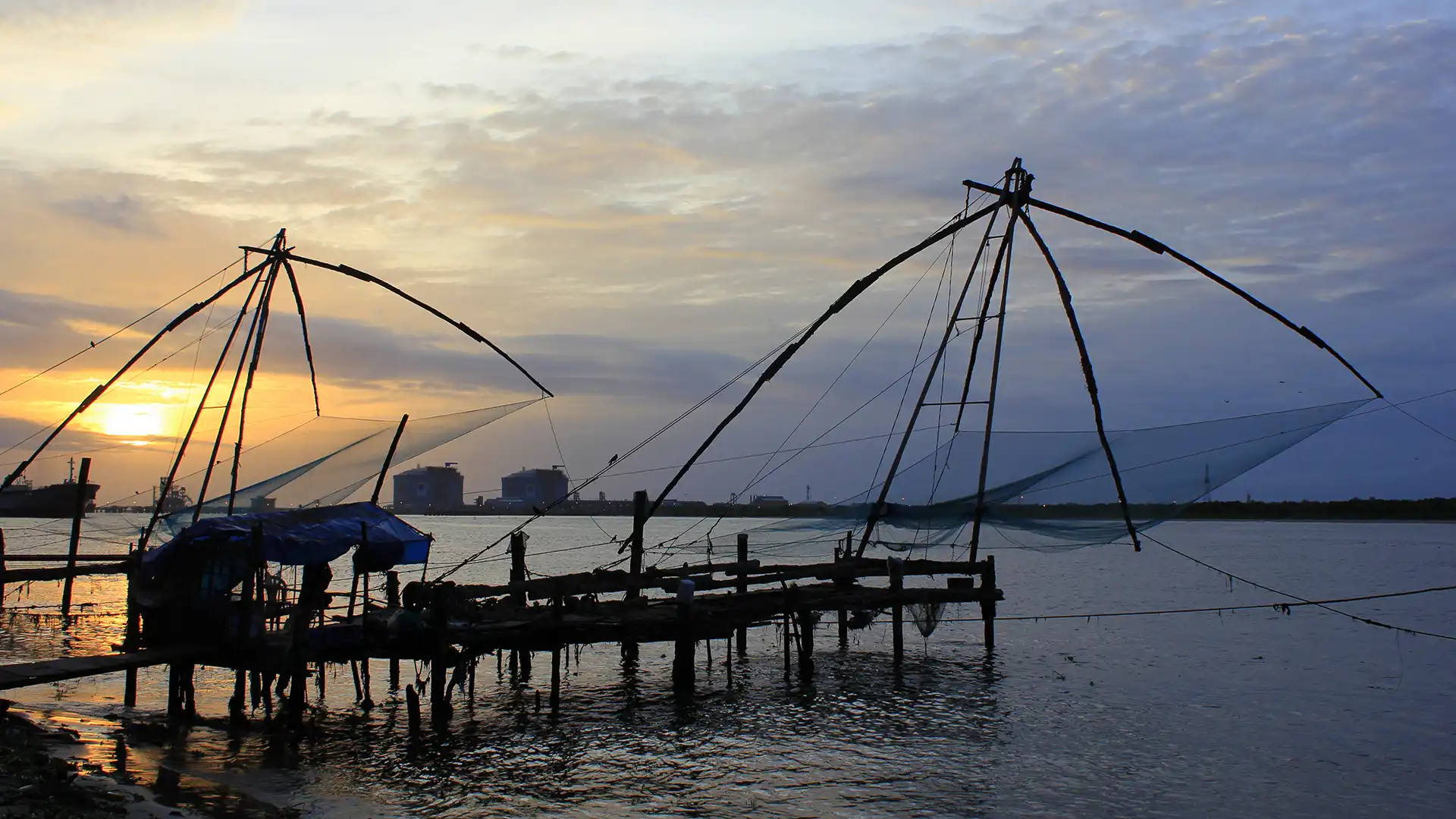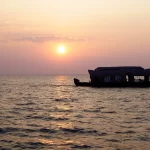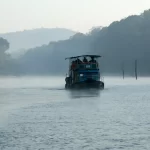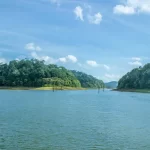Here are some key points about the Chinese Fishing Nets of Kochi:
- Thought to have been introduced by Chinese explorer Zheng He’s traders around the 14th–15th century.
- A testament to Kochi’s international trade history, especially its spice trade connections.
- Each net is operated by 4–6 fishermen working in perfect coordination.
- The fishing method is eco-friendly and non-mechanized, relying only on balance and manpower.
- Nets are typically lowered into the sea for 5–10 minutes and then lifted to check for the catch.
- Catch often includes small fish, prawns, and crabs, which are sold on the spot.
- The system showcases ancient engineering ingenuity, combining wood, ropes, and counterweights.
- Many structures have been standing for decades, with constant maintenance by local communities.
- The nets have become a living heritage attraction, blending livelihood with tourism.
- Street vendors nearby offer freshly grilled seafood, adding to the visitor experience.
- The sight is particularly magical during twilight, when the nets appear as giant silhouettes.
- Frequently featured in paintings, travelogues, and films, symbolizing Kochi’s charm.
- Provides insight into the fusion of cultures that shaped Kerala’s coastal identity.
- A must-visit stop during the Fort Kochi Heritage Walk.
Kochi, a lively city on India’s southwestern coast, is famous for its long history, mix of cultures, and stunning scenery. One of its most famous sights is the Chinese fishing nets, or “Cheenavala.” Chinese sailors brought these giant nets to Kochi hundreds of years ago. They have become a symbol of the city, demonstrating Kochi’s long-standing connections with other places.
A Glimpse into History
The Chinese fishing nets in Kochi demonstrate the city’s long-standing connections with other nations, particularly China. It is believed that a Chinese explorer named Zheng brought these nets to the Malabar Coast many years ago. He brought these nets to the Malabar Coast many years ago. The local name “Cheenavala” means “Chinese net” in Malayalam, the language spoken in Kerala.
These fishing nets are amazing examples of old-fashioned engineering. They’re made of bamboo and teak poles, and a large net hangs over the water. A group of fishermen work together to pull the net up and down using ropes, pulleys, and weights. This way of fishing is hard work, but it’s beneficial for the environment because it doesn’t hurt the fish or their homes in the water.
How They Work
The Chinese fishing net operation is a sight to behold, particularly during the early morning or late afternoon when the fishermen are most active. They lower the nets into the water, leave them there for a few minutes, and then lift them back up. On the opposite end of the cantilever, large stones tied to ropes balance the weight of the catch. They collect any caught fish from the submerged part of the net when raising it.
While the catch from these nets is often small, typically consisting of local fish varieties like mullet, sardines, and shrimp, using these nets is still important for the local economy. Fishermen often sell the fresh fish quickly at nearby markets, to local visitors, or to individuals who cook and sell it to tourists.
Cultural and Touristic Significance
Over time, the Chinese fishing nets have become more than just a way to catch fish; they’re a symbol of Kochi. Their unique design and history attract people from all over the world, making them one of Kerala’s most photographed places. Visitors often go to the Fort Kochi shoreline to watch the fishermen work and take pictures of the nets against the sunset.
The Chinese fishing nets are also popular with artists and photographers because they’re beautiful to look at and the area is peaceful. Many local restaurants and cafes in the area serve fresh seafood dishes made with fish caught from these nets, giving visitors a real taste of the local food.
Preserving a Living Heritage
Although the Chinese fishing nets are still very popular, they face problems today. Pollution in the water around Kochi, as well as fewer fish, have made it harder for fishermen to make a living using these old ways of fishing. Keeping the nets and their wooden parts in excellent condition also takes a lot of work and money.
Local people and groups that protect historical places are working to keep this special cultural practice alive. They’re trying to promote eco-friendly fishing methods, raise awareness about the importance of nets, and assist local fishermen through tourism and community projects.
Conclusion
The Chinese fishing nets in Kochi are more than just a way to catch fish; they represent Kochi’s rich culture and history. These old structures are still on the shores of Kochi, reminding us of the long history of cultural exchange and the importance of keeping traditional ways of doing things for the future.



















